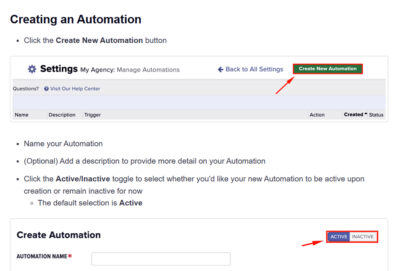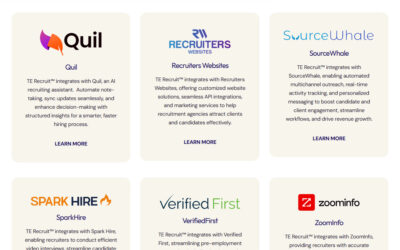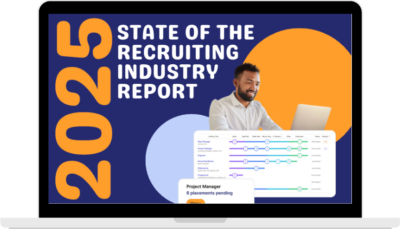The game has changed. Hiring, engaging, and retaining top talent has never been more complex. Turnover is climbing, with a growing percentage of new hires quitting within their first six months. For employers, this early attrition is devastating—not just in dollars, but in morale, productivity, and missed opportunities.
“Turnover is extremely costly when you consider the work not getting done, deadlines being missed, and the time lost to hire and train someone new,” explains Barb Bruno, CPC/CTS, President of Good as Gold Training.
To stay ahead, recruiters and search consultants must stop treating recruiting like checkers—simple, predictable, one-move-at-a-time—and start approaching it like chess: strategic, nuanced, and many moves ahead.
Checkers and Recruiting: Simple but Limited
Children often learn checkers first because the game is straightforward. The pieces are identical, the rules are simple, and the objective is clear: move, capture, win.
Recruiting used to look a lot like this. You’d post an open role on your company website or a job board, and qualified candidates would line up. Screening, interviewing, and hiring could be accomplished with relatively little complexity.
“If only recruiting the best talent for your clients were as simple and predictable as checkers,” Bruno says. “But today’s workforce is more complex, and so are their expectations.”
The reality? Advertising jobs online reaches just 15% of the workforce—those unemployed or actively looking. The remaining 85%—passive candidates—require a more sophisticated strategy. That’s where the chessboard comes in.
Chess and Recruiting: Complexity, Strategy, and Long-Term Thinking
Chess is a different game entirely. Sixteen pieces, each with unique movements. Multiple capture rules. Strategy that demands foresight, patience, and the ability to anticipate your opponent.
Recruiting today mirrors this complexity. Candidates come from multiple generations, each with distinct priorities. Some prize stability and benefits, while others demand flexibility, hybrid work, or purpose-driven missions.
“Don’t be surprised if a candidate asks more about career advancement, company culture, or philanthropic causes than about the job itself,” Bruno notes. “They also want to know about flexibility, remote options, and unique perks.”
Just like pawns, bishops, and knights, candidates are motivated by different factors. Treat them all the same and you’ll lose. Recognize their uniqueness, and you’ll have a winning strategy.
Why “Checkers” Recruiting Fails Today
Recruiters who stick with checkers-style tactics—post and pray, one-size-fits-all outreach, and slow, rigid hiring processes—are falling behind.
Top talent moves quickly. Candidates often receive multiple offers and won’t wait around while a client’s process drags. “If your clients aren’t conducting virtual interviews, panel interviews, or moving fast, they will lose the best talent,” says Bruno.
Every missed follow-up, every delayed offer, every lowball proposal is a bad move on the chessboard—and can cost your client the win.
Strategic Recruiting: Thinking Several Moves Ahead
In chess, repeating the same moves produces the same results. Recruiting is no different.
“You can’t ‘post and pray’ as your strategy,” Bruno emphasizes. “That approach only touches a small slice of the workforce. You must proactively recruit passive candidates if you want to compete for the best talent.”
Anticipate Motivators
A successful chess player studies the pieces and anticipates how each moves. Recruiters must study candidates and anticipate what drives them. Baby Boomers may value pensions or stability. Millennials may prioritize development and culture. Gen Z may demand inclusivity and social impact.
By tailoring your pitch to the candidate, you gain an edge.
Speed and Precision
In chess, timing matters. Wait too long and opportunities disappear. In recruiting, drawn-out hiring processes frustrate candidates and cause top talent to accept competing offers.
Recruiters must advise clients to streamline interviews, use technology to accelerate scheduling, and prepare competitive offers.
Every Move Has Consequences
In chess, one careless move can cost you the game. In recruiting, every touchpoint matters:
-
A poorly written job ad deters strong candidates.
-
A lack of feedback damages client relationships.
-
A slow response sends top performers elsewhere.
Strategic recruiters treat each step as critical to the endgame.
Checkmate Isn’t the End: Engagement and Retention Matter
In chess, the game ends with checkmate. In recruiting, the placement isn’t the finish line—it’s the beginning.
“Engagement and retention begin with your sourcing and recruiting process, but the game continues through onboarding and beyond,” says Bruno.
The Two-Week Notice Period
The danger zone starts as soon as a candidate gives notice. Counteroffers and second thoughts creep in. Smart recruiters maintain regular communication during this period to keep candidates engaged and confident.
Onboarding: The First Moves in a New Game
A poor onboarding experience is one of the fastest ways to lose a new hire. Recruiters who coach their clients to deliver strong onboarding—structured training, cultural integration, and mentorship—help ensure placements stick.
Follow-Up: Extending the Game
Bruno advises recruiters to build follow-up into their process: check in during the first week, at 30 days, 60 days, and beyond. “A strong follow-up process will improve engagement and retention of the candidates you place,” she notes.
This long-game thinking not only protects placements but also strengthens client trust.
Lessons From Chess: Key Recruiting Principles
-
Think Ahead – Always anticipate candidate and client needs. Don’t wait for them to voice concerns; address them proactively.
-
Know the Pieces – Understand generational motivators and individual differences. Customize your pitch accordingly.
-
Control the Board – Keep pipelines full by sourcing continuously, not just when jobs open.
-
Act With Speed – In both chess and recruiting, hesitation costs wins. Move decisively and quickly.
-
Make Every Move Count – Each email, call, and offer shapes outcomes. Treat them as critical moves.
Case Study: Checkers vs. Chess in Recruiting
Consider two recruiters given the same assignment: fill a senior engineering role.
-
Recruiter A (Checkers Approach): Posts the job online and waits for responses. Interviews are scheduled slowly. By the time an offer is extended, the top candidate has accepted a different job.
-
Recruiter B (Chess Approach): Immediately sources passive candidates, leverages referrals, and guides the client to use panel video interviews for speed. She anticipates motivators and advises on a competitive offer. The candidate accepts quickly.
Recruiter B wins not by luck, but by playing chess.
From Recruiter to Strategic Chess Player
The shift from checkers to chess transforms how clients see recruiters. Instead of being resume-pushers, they become trusted advisors:
-
Helping clients design faster hiring processes.
-
Educating them on candidate motivators.
-
Ensuring competitive offers.
-
Coaching them on onboarding and retention.
This consultative approach builds loyalty, repeat business, and referrals.
“When you become a strategic chess player, you view your entire placement process differently—while your competitors are still playing checkers,” Bruno concludes.
Winning the New Talent Game
The talent market has changed, and so must recruiting strategies. The simplicity of checkers is gone. Today’s recruiters must embrace the complexity of chess: anticipating moves, thinking strategically, and staying several steps ahead.
Those who adopt this mindset will not only win top talent but also help clients keep them—delivering lasting value and setting themselves apart from competitors still clinging to outdated, checkerboard approaches.








